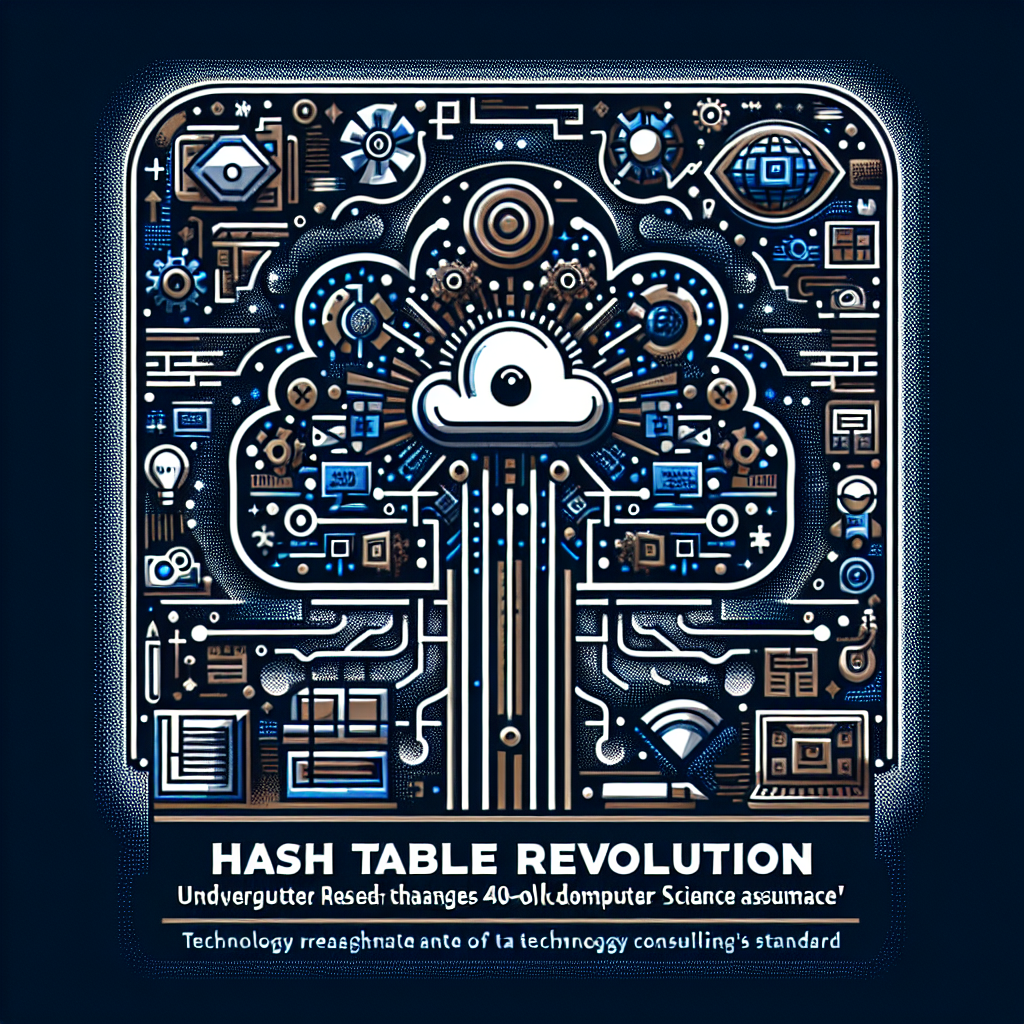Hash Table Revolution: Undergraduate Researcher Challenges 40-Year-Old Computer Science Assumption
In the world of computer science, fundamental assumptions rarely get overturned. But when they do, it often signals a breakthrough that forces us to rethink long-established principles. Such is the case with a recent discovery that has sent ripples through the data science community: an undergraduate researcher, working with two colleagues, has successfully challenged a 40-year-old conjecture about hash tables made by Turing Award winner Andrew Yao.
This remarkable achievement not only demonstrates how innovation can come from unexpected sources but also has potential implications for countless systems that rely on hash tables—from databases to caching mechanisms, search algorithms, and more.
The Hash Table Conjecture That Stood for Four Decades
Hash tables are fundamental data structures in computer science that enable efficient data retrieval. They work by using a hash function to map data to specific locations in memory, allowing for constant-time lookups in ideal circumstances. Since their introduction, they have become ubiquitous in computing systems thanks to their performance characteristics.
In 1985, renowned computer scientist Andrew Yao—who would later receive the prestigious A.M. Turing Award—published a paper asserting that among hash tables with specific properties, the most efficient way to locate an individual item required a certain minimum number of operations. This assertion essentially placed a theoretical limit on how fast lookups in these structures could be performed.
For four decades, Yao's conjecture has influenced algorithm design and analysis, with developers and researchers operating under the assumption that this lower bound was immutable. Many systems were built and optimized within these perceived constraints, working around what was considered a fundamental limitation.

The Breakthrough: How an Undergraduate Challenged Convention
The breakthrough came from an unexpected source: an undergraduate researcher working with two colleagues. Their paper demonstrates that searches within hash tables can actually be performed significantly faster than what Yao's conjecture suggested was possible.
By developing a novel approach to hash table design and query processing, the team proved that the theoretical minimum number of operations could be undercut in certain scenarios. What's particularly impressive about this achievement is not just the result itself, but also that it took an early-career researcher to question an assumption that had become deeply embedded in computer science theory.
The precise details of their approach involve:
- A re-examination of collision resolution strategies
- Novel mathematical analysis of hash function distribution properties
- Optimization techniques that leverage modern hardware architecture
- A clever restructuring of how data is stored and accessed within the table
The elegance of their solution lies in its ability to sidestep theoretical barriers that were previously thought to be immutable laws of computational complexity. Their approach doesn't break the laws of computer science—it just reveals that the boundaries were not where we thought they were.
Implications for Modern Computing Systems
Hash tables are not just theoretical constructs confined to academic papers—they form the backbone of numerous critical systems in modern computing environments. From databases and caching systems to compilers, operating systems, and network routers, hash tables enable the quick lookups that keep our digital world responsive.
The implications of this discovery could therefore be far-reaching:
Database Performance: Modern databases rely heavily on hash-based indexing for quick data retrieval. Improvements in hash table performance could translate to faster query responses, particularly for systems handling large volumes of data or requiring real-time analytics.
In-Memory Caching: Services like Redis and Memcached, which use hash tables extensively, could potentially be optimized for even better performance, reducing latency for web services and applications.
Network Systems: Routers and load balancers that use hash-based lookups for routing decisions might benefit from more efficient implementations, potentially increasing throughput in network infrastructure.
Programming Languages and Compilers: Many language runtime environments use hash tables for symbol tables, method dispatch, and other internal mechanisms. Optimizations here could speed up compilation and execution of code.
The Power of Fresh Perspectives in Technology
Perhaps the most inspiring aspect of this story is what it tells us about innovation in technology. It's a powerful reminder that breakthroughs can come from anywhere—including from those who haven't yet built decades-long careers in the field.
In an industry that sometimes places excessive emphasis on experience and credentials, this undergraduate's achievement highlights the value of fresh perspectives. Sometimes, not being immersed in conventional wisdom allows one to question assumptions that veterans might take for granted.
This case also emphasizes the importance of fostering environments where assumptions can be safely challenged. Many organizations talk about encouraging innovation, but truly groundbreaking ideas often require questioning fundamentals that "everyone knows to be true."

Connecting to Broader Industry Trends
This discovery comes at a time when the technology industry is increasingly focused on performance optimization. Several concurrent trends make this breakthrough particularly relevant:
Data Volume Growth: With the exponential growth in data being collected and processed, even small efficiency improvements in fundamental data structures can yield significant real-world benefits.
Edge Computing: As computation moves closer to the data source in edge computing scenarios, efficient data structures become even more critical due to resource constraints.
Energy Efficiency: More efficient algorithms translate directly to power savings—an increasingly important consideration as the environmental impact of computing becomes a greater concern.
Real-time Systems: From financial trading to autonomous vehicles, systems that require real-time responses benefit greatly from more efficient data retrieval mechanisms.
The timing of this breakthrough aligns perfectly with industry needs, potentially enabling innovations that were previously thought to be performance-constrained.
What This Means for Binbash Consulting Clients
At Binbash Consulting, we specialize in building and optimizing cloud infrastructure and applications for performance, reliability, and security. This breakthrough in hash table efficiency has several implications for our clients:
Infrastructure Optimization: As implementations of these improved hash table algorithms become available in databases, caching systems, and other infrastructure components, we'll be evaluating and implementing these optimizations to improve performance for our clients' systems.
Application Performance: For clients with data-intensive applications, we'll be looking at opportunities to leverage these new insights in custom implementations where standard libraries might not yet incorporate these improvements.
Cost Efficiency: More efficient data structures often translate directly to resource savings. This could mean lower compute costs for cloud workloads that are currently bottlenecked by data retrieval operations.
Scalability Planning: Understanding these new theoretical limits helps us better advise clients on the scalability characteristics of their systems and make more accurate projections about performance at scale.
Our team is already analyzing how these findings might be applied to specific client scenarios, particularly those with high-throughput data processing requirements or latency-sensitive applications.
Looking Forward
As with any theoretical breakthrough, there will be a gap between the academic discovery and widespread practical implementation. However, the history of computer science shows that significant algorithmic improvements eventually find their way into the systems we all depend on.
At Binbash Consulting, we're committed to staying at the forefront of these developments and translating theoretical advances into practical benefits for our clients. This story also reinforces one of our core values: assumptions should always be open to challenge, especially when they limit what we believe is possible.
We'll be following the development of this breakthrough closely, particularly as it moves from theory into practical implementations in the various systems and platforms we work with. And in the meantime, we'll continue to draw inspiration from this reminder that sometimes, the most transformative ideas come from questioning what "everyone knows to be true."
If you're interested in discussing how optimizations like these might benefit your specific infrastructure and applications, don't hesitate to reach out to our team of experts.

